Address
5th Floor, No.77 Xinhe Rd, Shangmugu, Pinghu Area, Longgang District, Shenzhen, Guangdong, China
Contact
Email [email protected]
Tell (+86) 755-25507076
5th Floor, No.77 Xinhe Rd, Shangmugu, Pinghu Area, Longgang District, Shenzhen, Guangdong, China
Email [email protected]
Tell (+86) 755-25507076
Greetings everyone! As a professional electronics enthusiast, I’ve had the pleasure of testing out the XTAR INR 21700H battery. With its impressive specifications, it has caught the attention of many in the battery industry. I was eager to put it to the test and see how it performed in real-world scenarios. In this review, I’ll be sharing my honest and unbiased opinion on the INR 21700H battery’s specifications, performance, and overall value. So, if you’re looking for an unbiased review of this high-performance battery, then keep reading to find out if it lives up to the hype.
Battery specifications are listed on the manufacturer’s website.
• Nominal capacity 4000mAh
• Nominal voltage 3.6 volts
• Cut-off charge voltage 4.2 volts
• Cut-off discharge voltage 2.5 volts
• Maximum continuous discharge current 25A
• Pulse discharge current up to 40A
• Battery dimensions: diameter 21.5mm, length 70.5mm
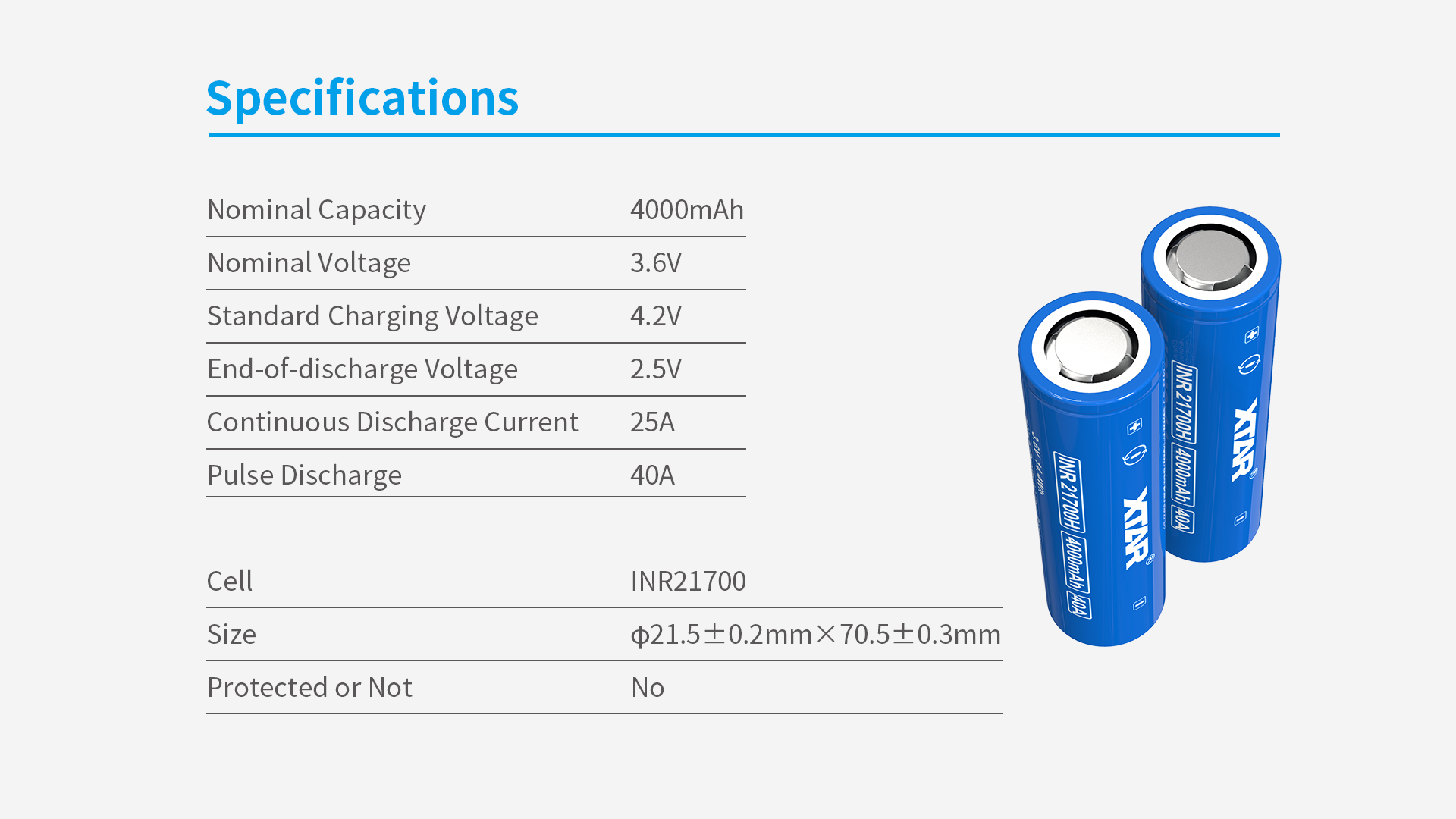
this is an unprotected battery. It comes with a blue shrink wrap and white lettering indicating the positive and negative terminals. The INR 21700H model is made of cobalt and nickel oxides, with a nominal voltage of 3.6 volts and an energy capacity of 14.4 watt-hours. About the operating temperature, the manufacturer indicates that high-current batteries are ideal for electronic cigarettes, but if high-current, then I think that we can safely heat them up to about 80 degrees Celsius on the surface of the battery batteries.
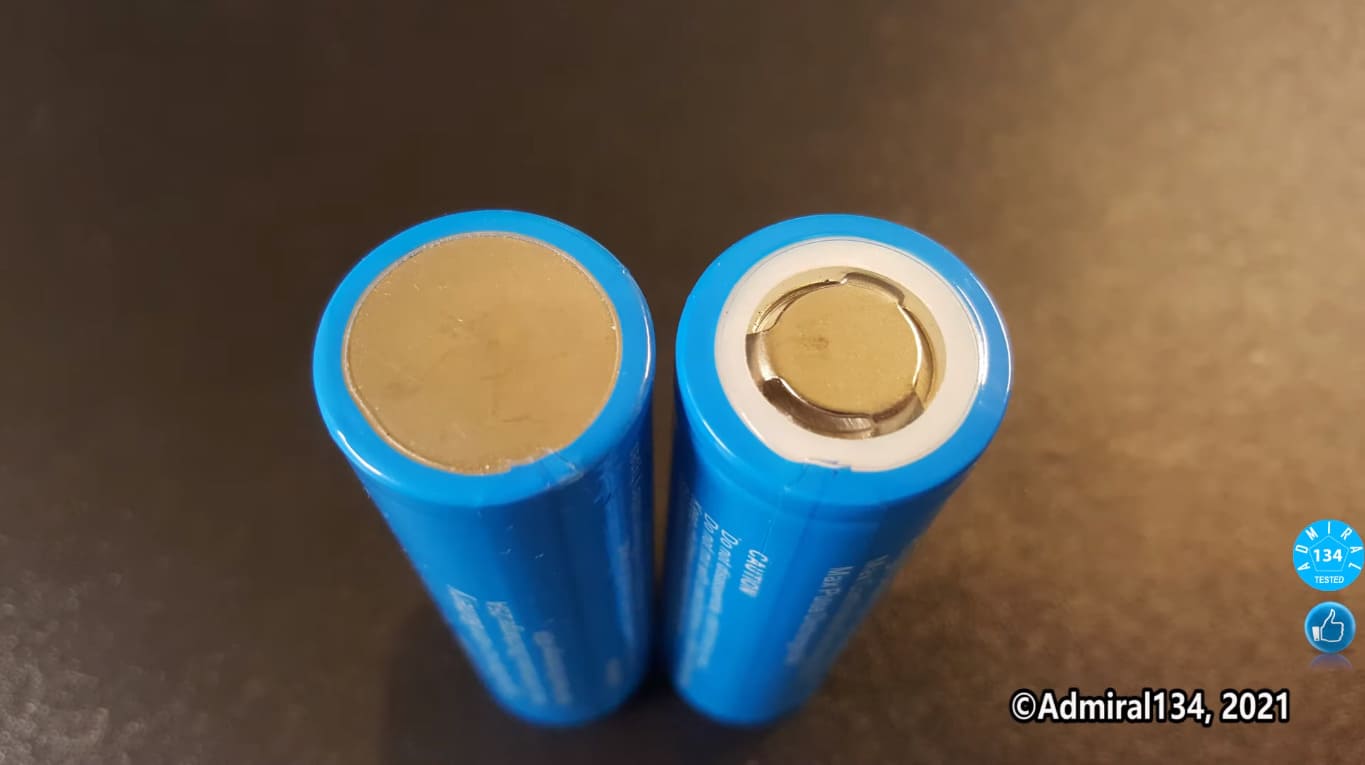
The battery weight and internal resistance are not specified. The positive terminal features a flat design with three mounting points on the top surface, while the negative terminal is also flat and has a glossy white insulating washer.
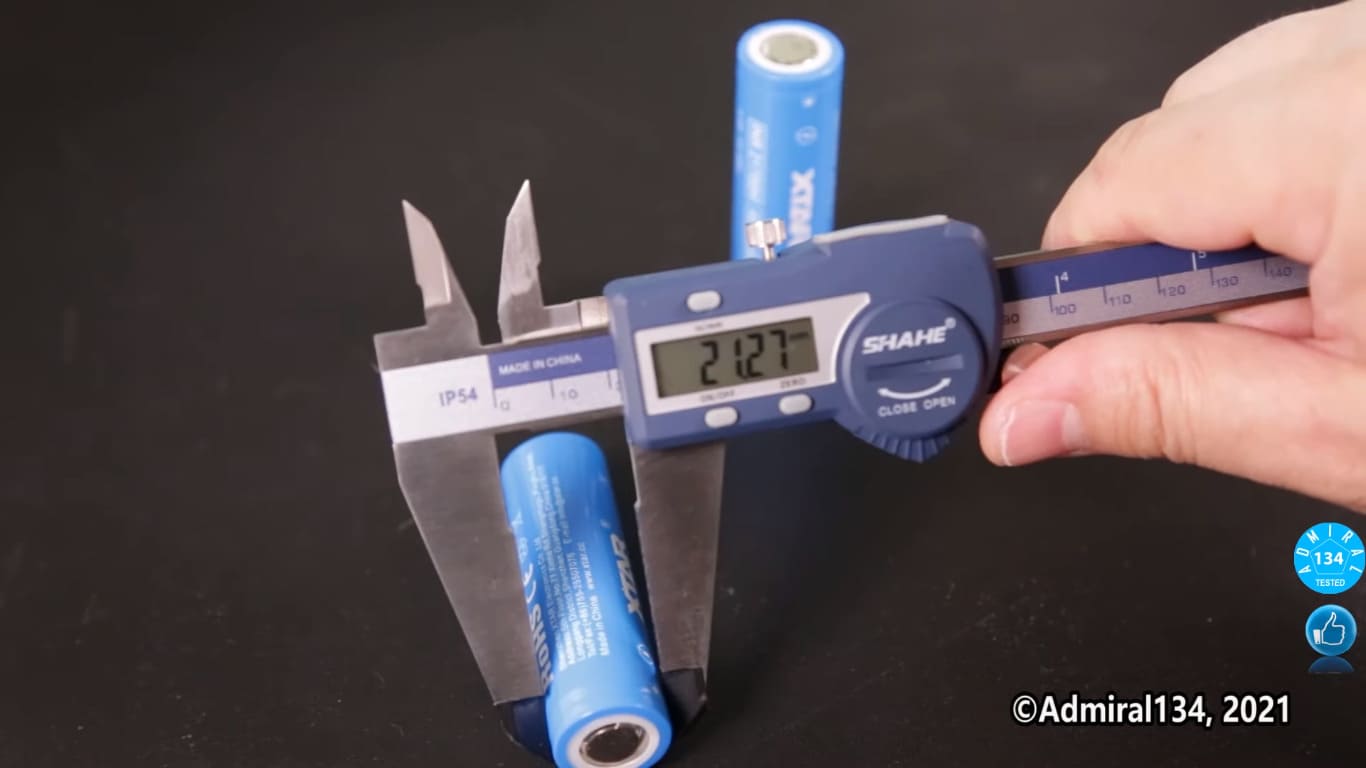
In terms of weight, the first battery sample weighs 67.85g, while the second sample is almost 68g. The dimensions of both batteries are similar, with a diameter of 21.27mm and a length of exactly 70.01mm for the first sample, and a diameter of 21.38mm and a length of 70.10mm for the second sample.
I used a specialized tester, like YR1035+, to measure the internal resistance of the batteries. This tester employs a four-wire connection system and measures the internal resistance by passing alternating current with a frequency of 1 kHz.
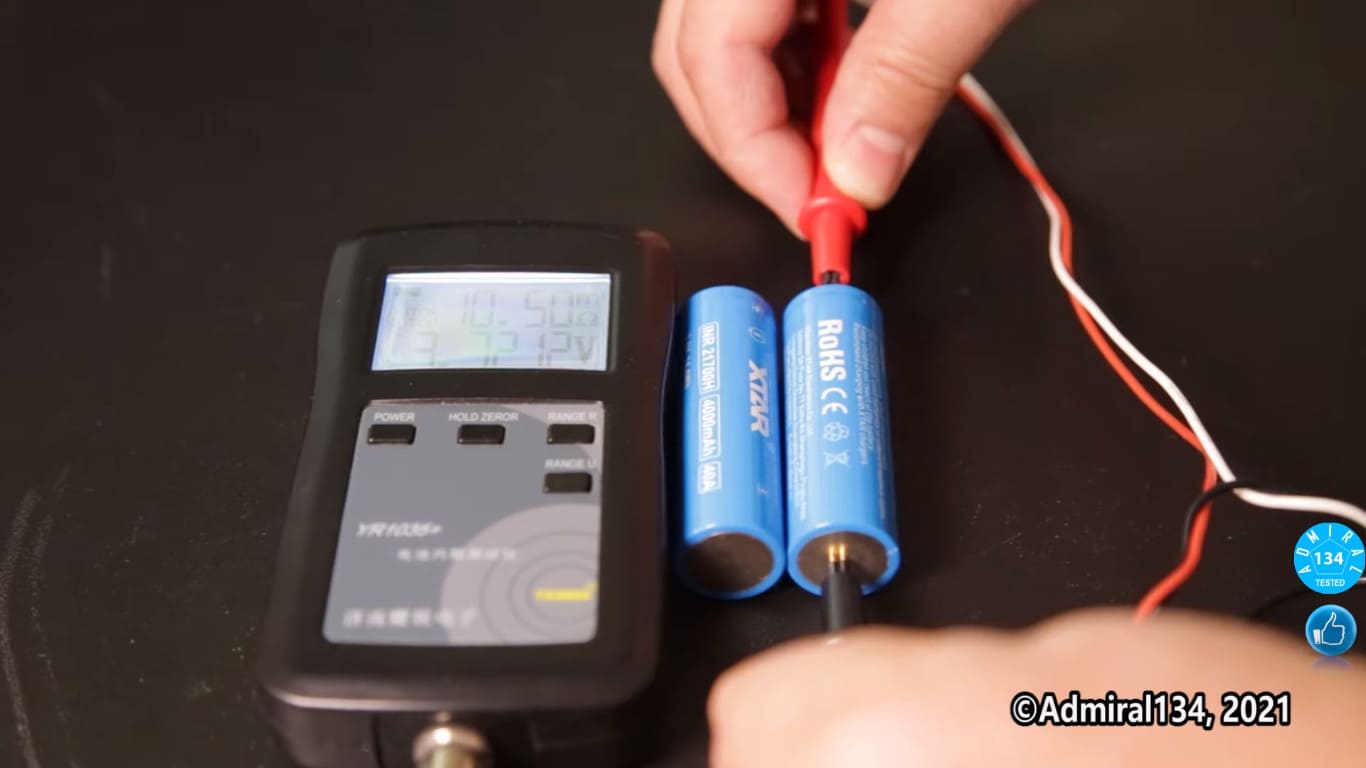
The results of my testing were very close for both battery samples. The first sample had an internal resistance of 10.47mΩ, and a voltage of 3.7 volts, while the second sample had an internal resistance of 10.5mΩ, with a similar voltage.
For further testing, I used an analyzer for chemical current sources, specifically the ACK 2.5.10.8. I tested both battery samples, with the first sample in slot number 1, and the second sample in slot number 5.
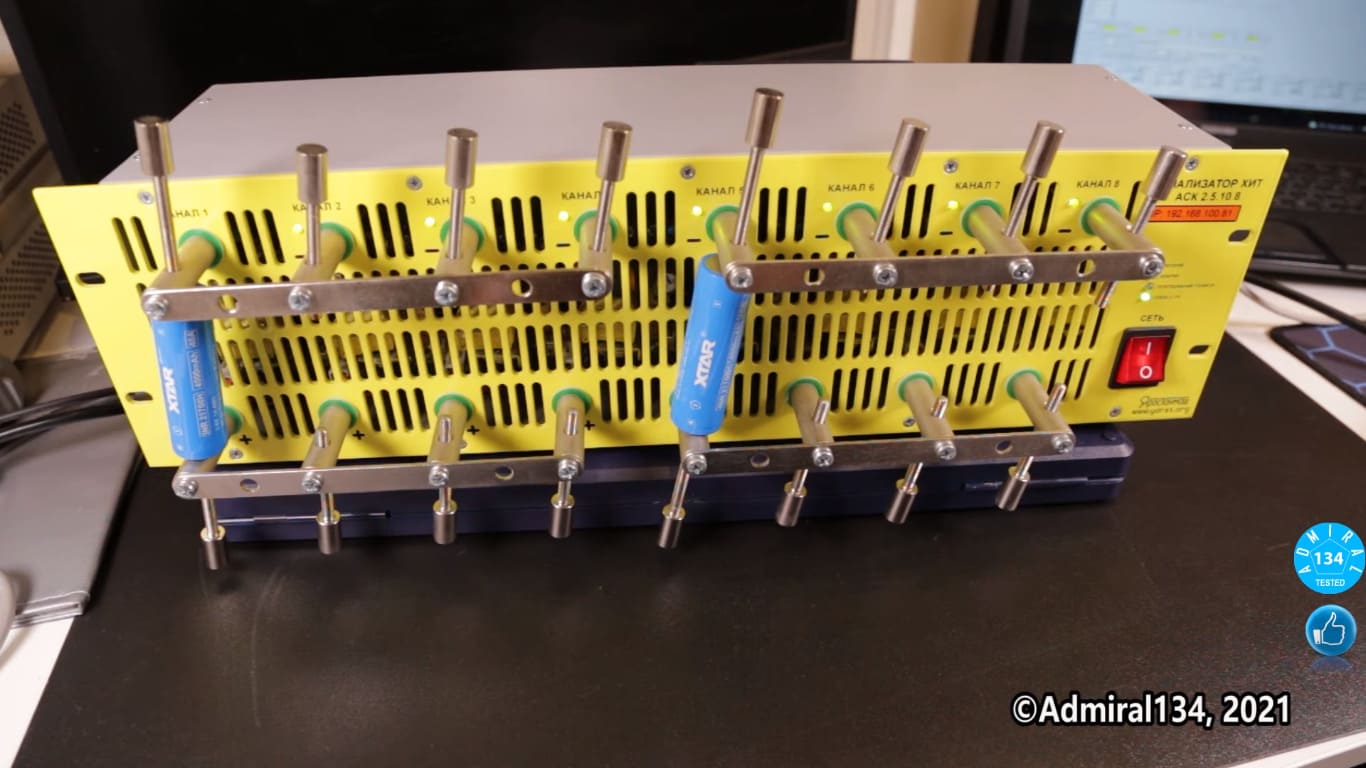
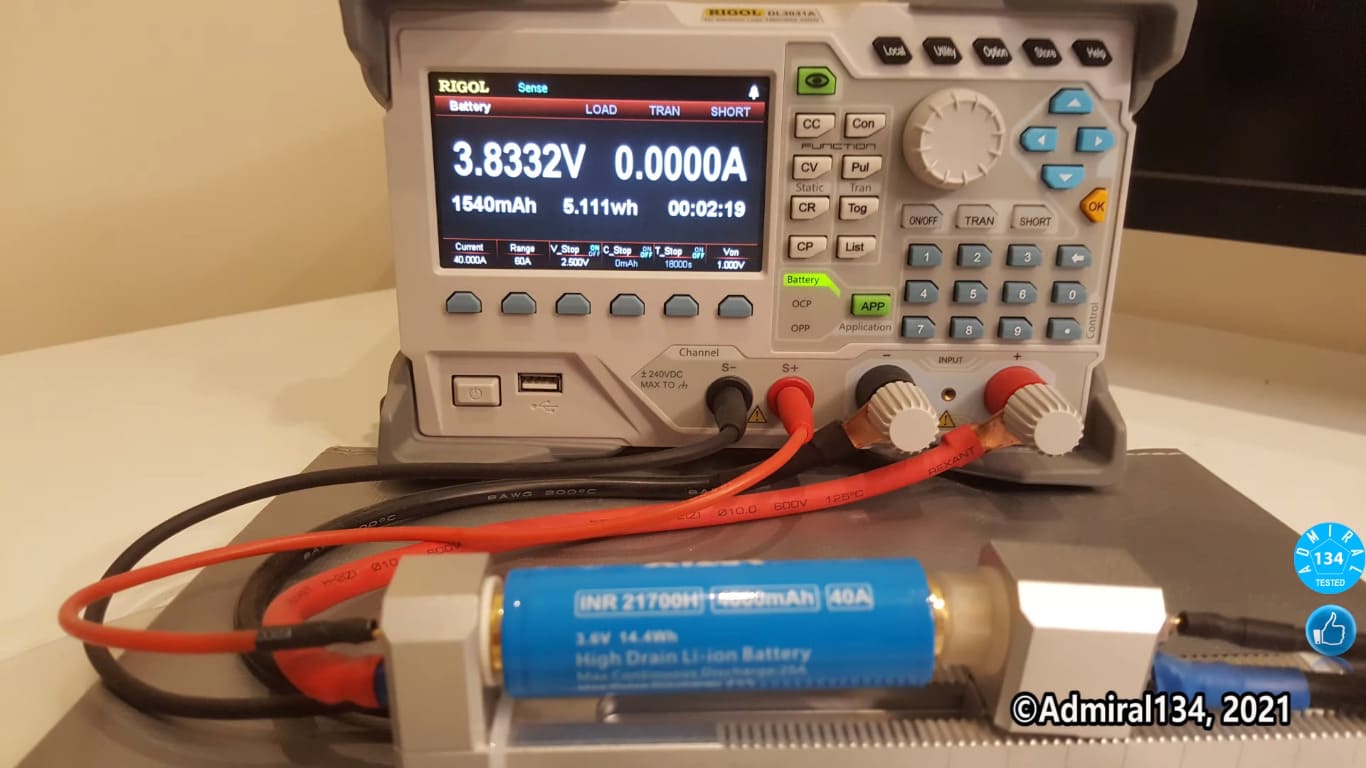
The testing procedure is shown on the screen in the review video, with the fourth step being a discharge of 20% of the battery capacity at a current of 800 milliamps until the voltage drops to 2.5 volts. After a short pause of 1 hour, the sixth step involves charging the battery with a constant current of 2 amps until the voltage reaches 4.2 volts. The seventh step is a constant voltage charge, where the charging current is gradually reduced from 2 amps to a cut-off current of 100 milliamps when the voltage reaches 4.2 volts.
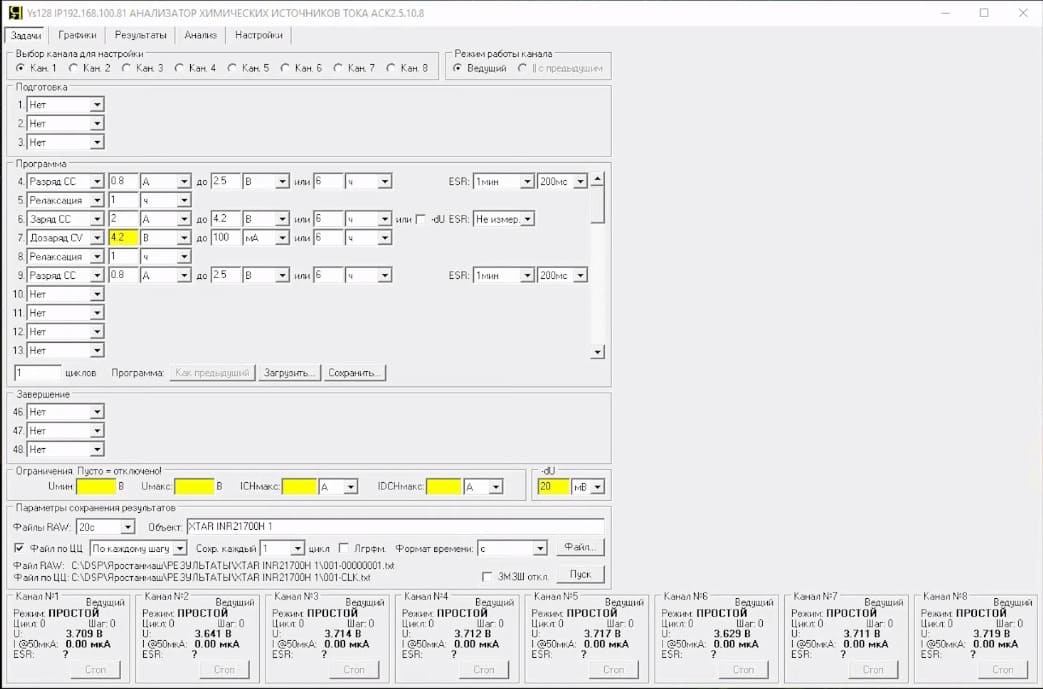
After a one-hour pause in step eight, the ninth step is another discharge at a constant current of 0.8 amps, which is 20% of the battery capacity, until the voltage drops to 2.5 volts, with equivalent measurements taken every minute. The testing scheme is identical for both battery samples.
After this test I will perform further testing with discharge current higher than 10, 20, 25 amps, and more. And after the completion of testing, I will present the final results. Overall, based on my initial testing, these batteries seem to be reliable and capable of delivering their advertised specifications.
The first channel and the 5th channel sum up the results of testing. The table was presented below.
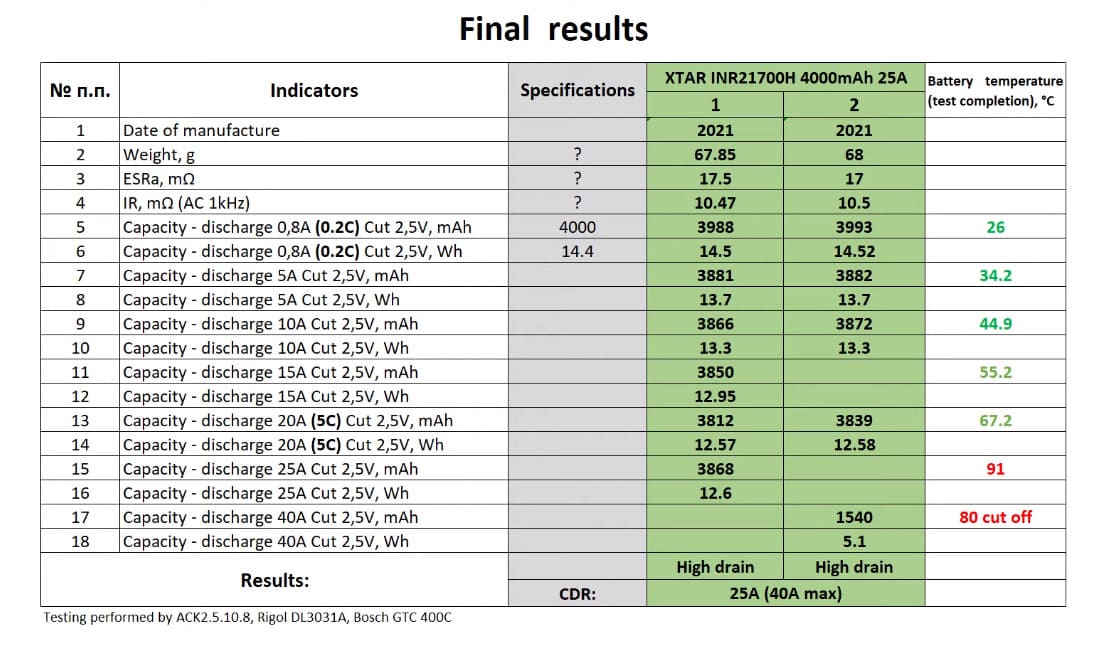
It shows the indicators that were used to evaluate the characteristics of the batteries in the second column. The third column shows the specifications, and the 4th and 5th columns show the results obtained from testing 1-2 battery samples from Xtar. The 6th column shows the temperature at the surface of the batteries at the end of the testing.
The battery weight is almost 68 grams, and the internal resistance, measured by passing alternating current at a frequency of 1 kHz, was approximately 10.5mΩ, which is a good indicator of the average equivalent series resistance. The equivalent series resistance of the batteries (ESRa) was 17.5 and 17 mΩ, respectively, which is a non-constant value. I’ll show how it changes during battery discharge later on separate graphs.
In the fifth line of the capacity test, following the recommendations of GOST, the measured capacity of the XTAR INR21700H batteries was found to be 3988-3993mAh. These values are very close to the declared 4000mAh, with a deviation of only 0.12%, which is an excellent result for batteries from a single batch. The amount of energy delivered 14.5 watt-hours, which is close to the declared value of 14.4 watt-hours.
During discharge with a current of 5, 10, 15, and 20 amperes, the batteries successfully coped with these tests, and the amount of energy delivered during these tests was 13.7, 13.3, 12.95, and 12.58 watt-hours respectively. After completion of the 20-amp discharge test, the battery had accumulated 3,868mAh of energy, which is equivalent to 12.6 watt-hours. After the completion test with a discharge current of 20A, we can safely say that these are high-current batteries.
To further evaluate their performance, I also conducted a test with a discharge current of 25 amps. The results were promising, with the batteries delivering 3,868 milliamp-hours and 12.6 watt-hours of accumulated energy.
The surface temperatures of the batteries were also monitored throughout the tests, and the temperatures ranged from 21 degrees Celsius at the start of the test to 91 degrees Celsius at the end of the 25-amp discharge test.
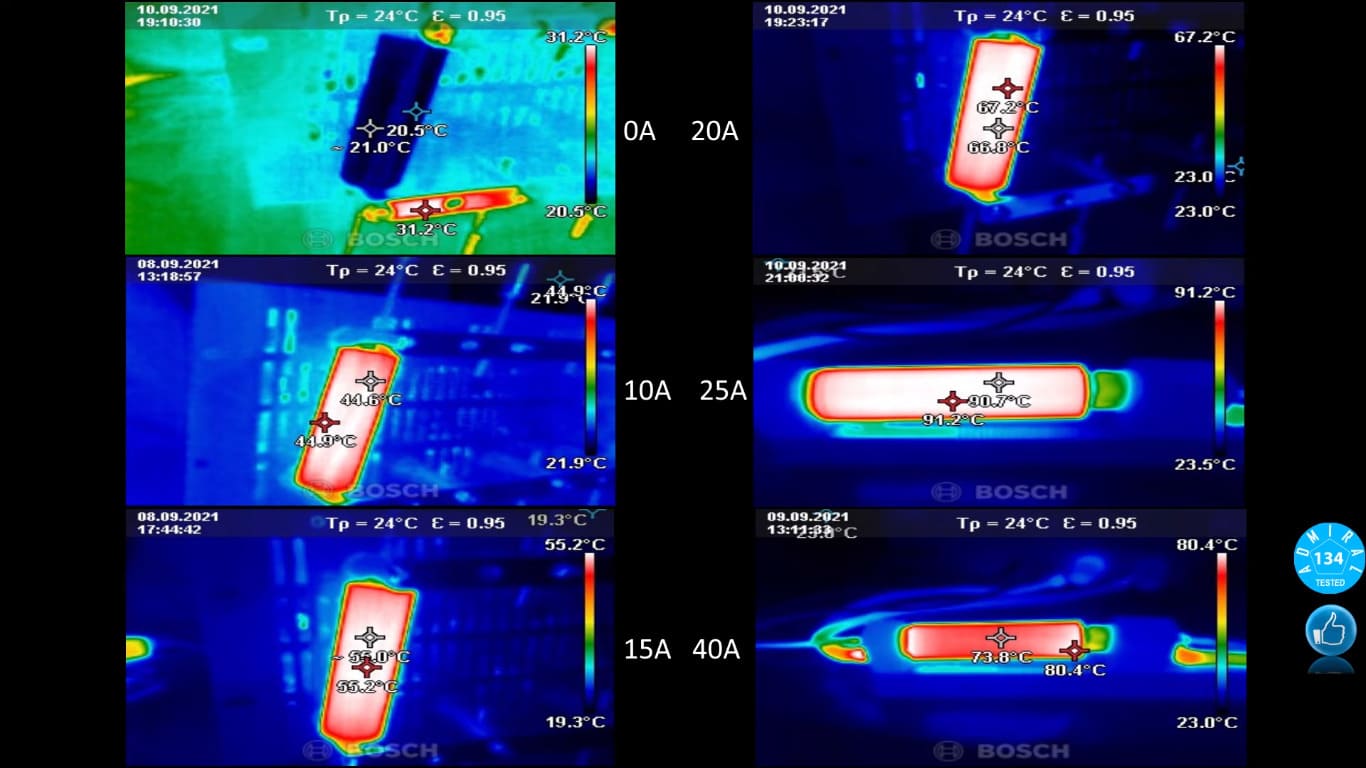
The temperature on the surface of the batteries before testing was approximately 21 degrees Celsius. When discharging with a current of 10A, it rose to 45 degrees Celsius. During a 15A discharge, it was 55 degrees Celsius, and 67 degrees Celsius during a 20A discharge. At the end of the 25-amp discharge, the temperature was 91 degrees Celsius. To an untrained eye, this number might seem too high, but it is not. As proof, I present two examples. Murata and Samsung both have battery specifications that indicate high discharge currents and maximum temperatures.
For the Murata battery US18650VTC5D, the maximum continuous discharge current is 35 amps with a temperature cutoff at the upper threshold of 90 degrees Celsius. The widely known Samsung INR18650-25R battery is also a high-current battery with a maximum continuous discharge current of 20 amps. However, not everyone has seen the slide with the graphs from the manufacturer’s specifications. It is clear from the graphs and table below that the temperature on the surface of the battery is 95 degrees Celsius during a 20-amp discharge. At a discharge rate of 25 amps, the temperature was almost 107 degrees Celsius.
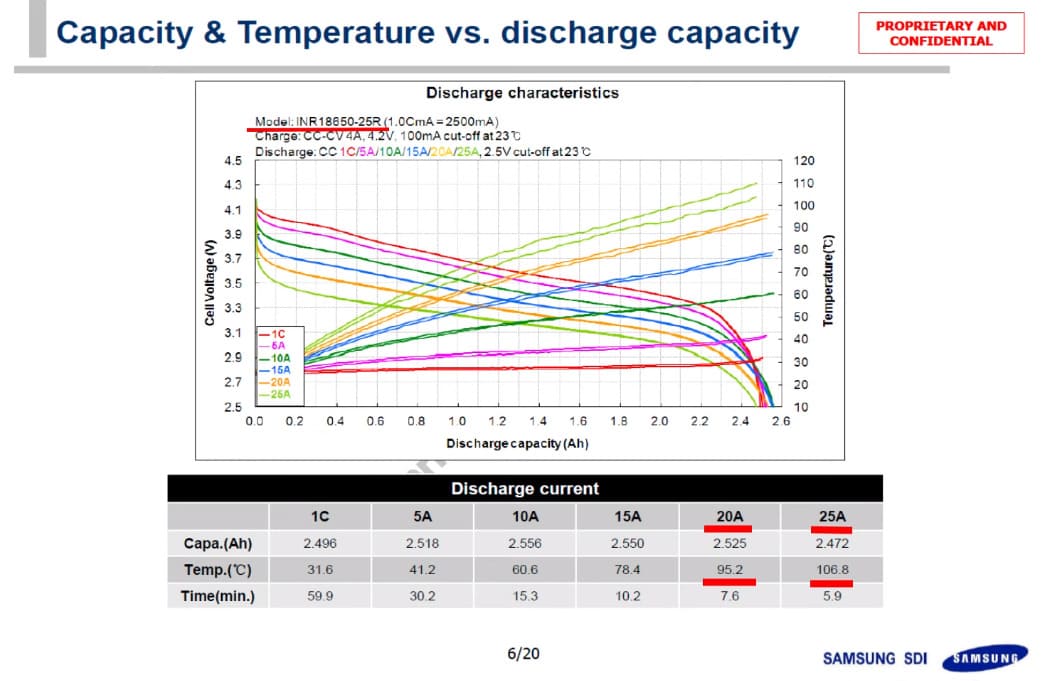
Since the manufacturer specifies 20 amps, the temperature of 95 degrees Celsius on the surface of the battery is not considered high by Samsung. So, let’s return to the Xtar batteries. The temperature at the end of the 25-amp discharge test was 91 degrees Celsius. This is probably not considered too high or extreme by the manufacturer. However, when a discharge current of 40 amps was applied, the surface temperature of the battery exhibited a significant gradient, with the temperature at the center of the battery and at the plus and minus terminals being almost 7 degrees Celsius higher than the rest of the surface. The heat distribution couldn’t keep up with the heating of the battery, causing the temperature to rise rapidly.
During the test, the Xtar 21700H battery discharged at a current of 40 amps until the cutoff at 80 degrees Celsius, delivered 1540 milliampere-hours and 5.1 watt-hours of accumulated charge.
This graph shows the discharge characteristics of Xstar 21700H battery when discharged with current from 0.8A to 40A.
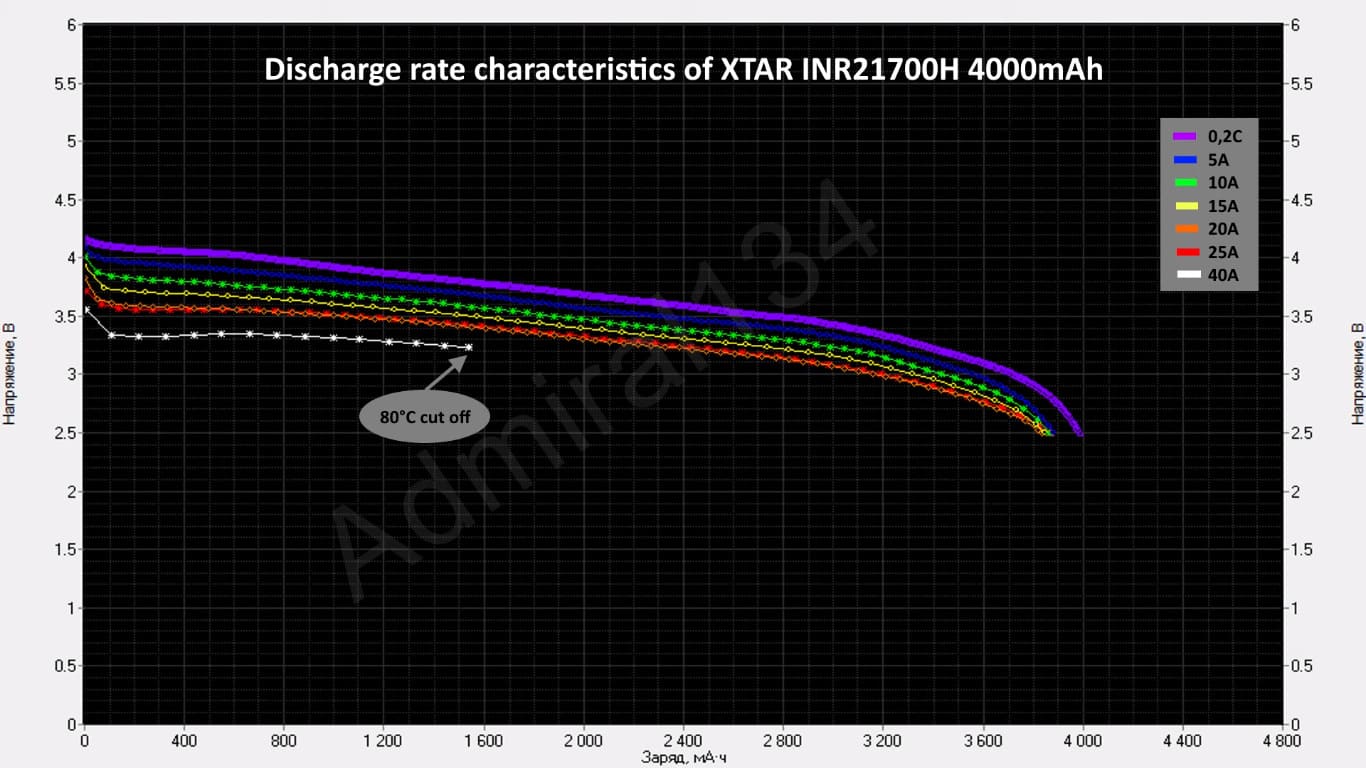
vertical is the voltage in volts; horizontal is the amount of charge given in milliamp-hours.
The next graph shows the same tests, but by horizontally the amount of energy given in watt-hours.
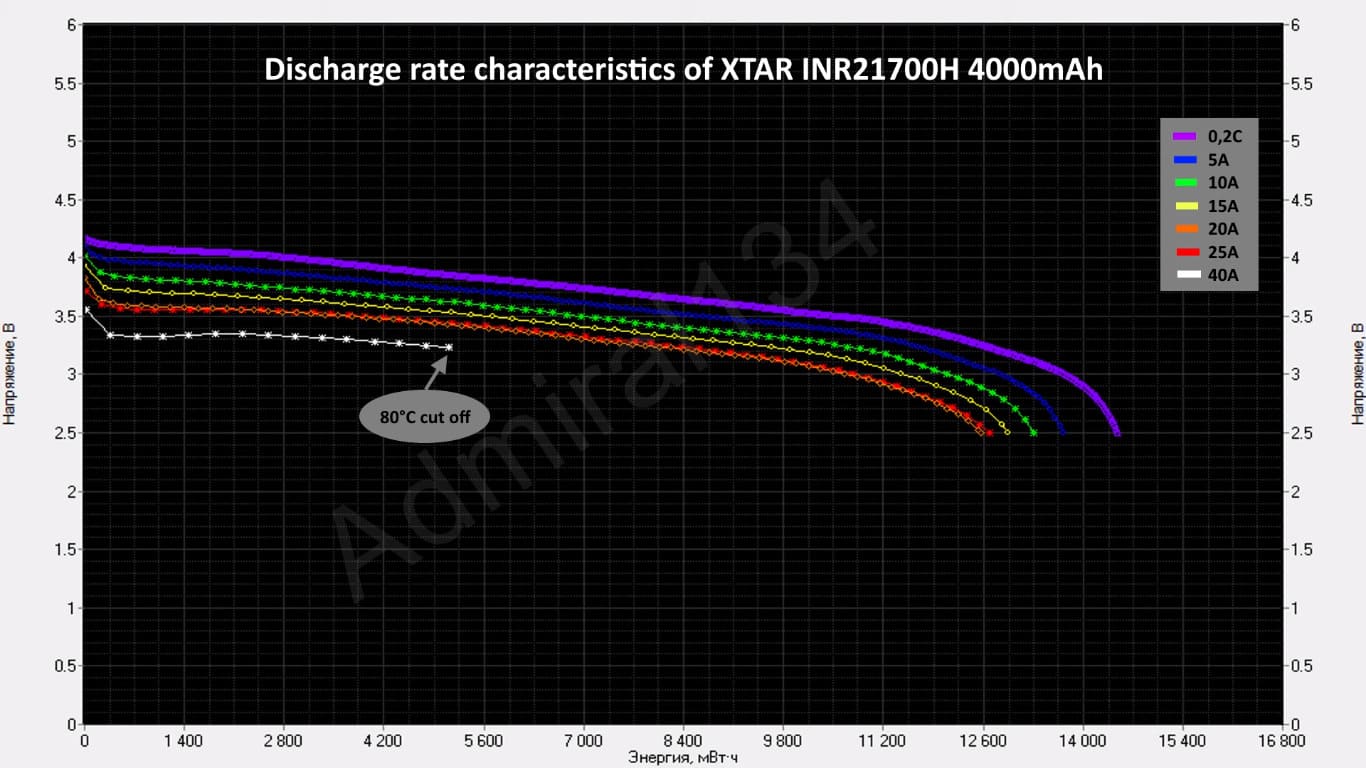
The white curve was test at a discharge current of 40 amps. The test was manually terminated when the surface temperature of the battery reached 80 degrees Celsius, following the previous tests.
In previous reviews, I demonstrated the discharge characteristics of batteries, and you asked questions about the equivalent series resistance of batteries, how this value changes, and so on. This graph illustrates how the voltage at the battery terminals changes over 4 hours as the battery is discharged with a current of 0.8 amperes. Additionally, it shows the battery’s equivalent series resistance (ESR, also called SR).
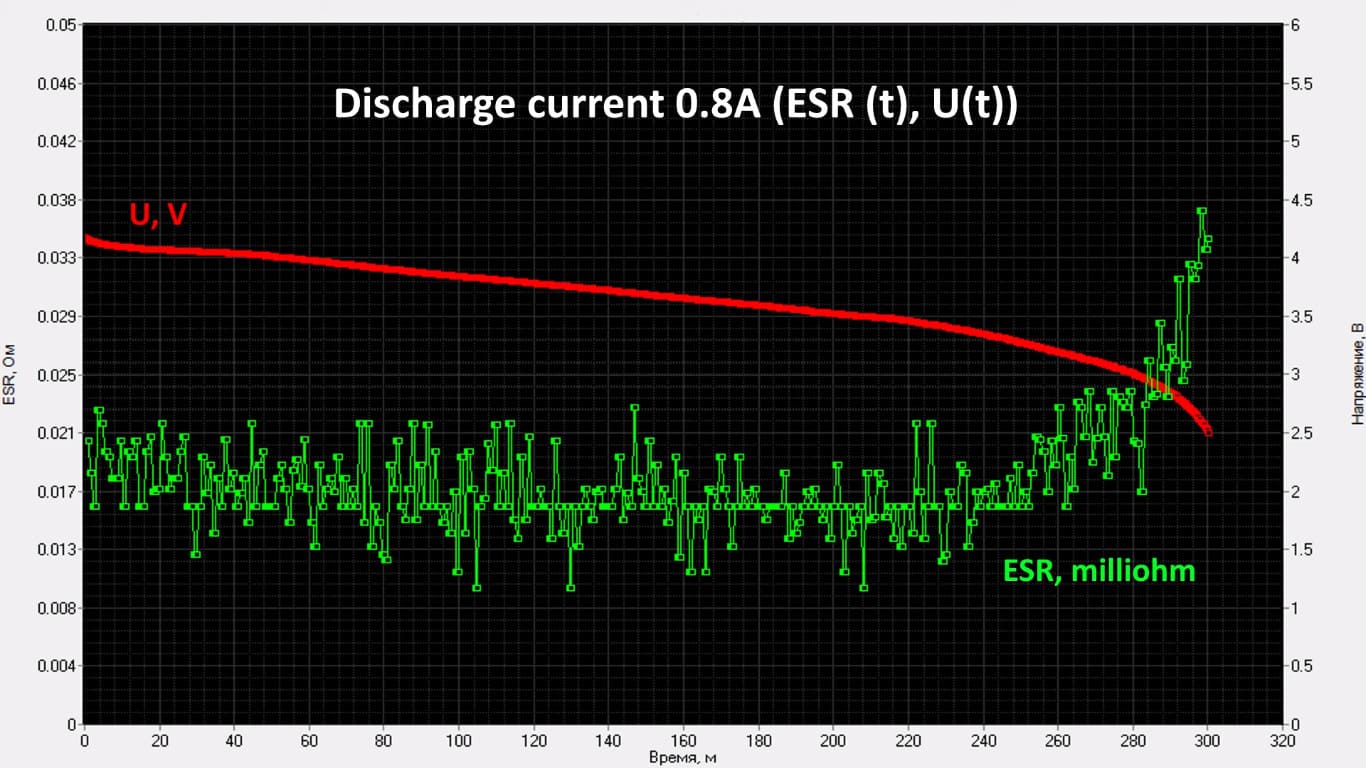
The value of SR was approximately 21 milliohms, with slight fluctuations, but on average, this value was 21 milliohms. Starting from the 5th hour, from 240 to 300 minutes, we see a smooth increase in SR up to 38 milliohms, which means that the value at the end of the discharge doubled.
The next graph shows a similar dependence but with a discharge current of 20 amperes.
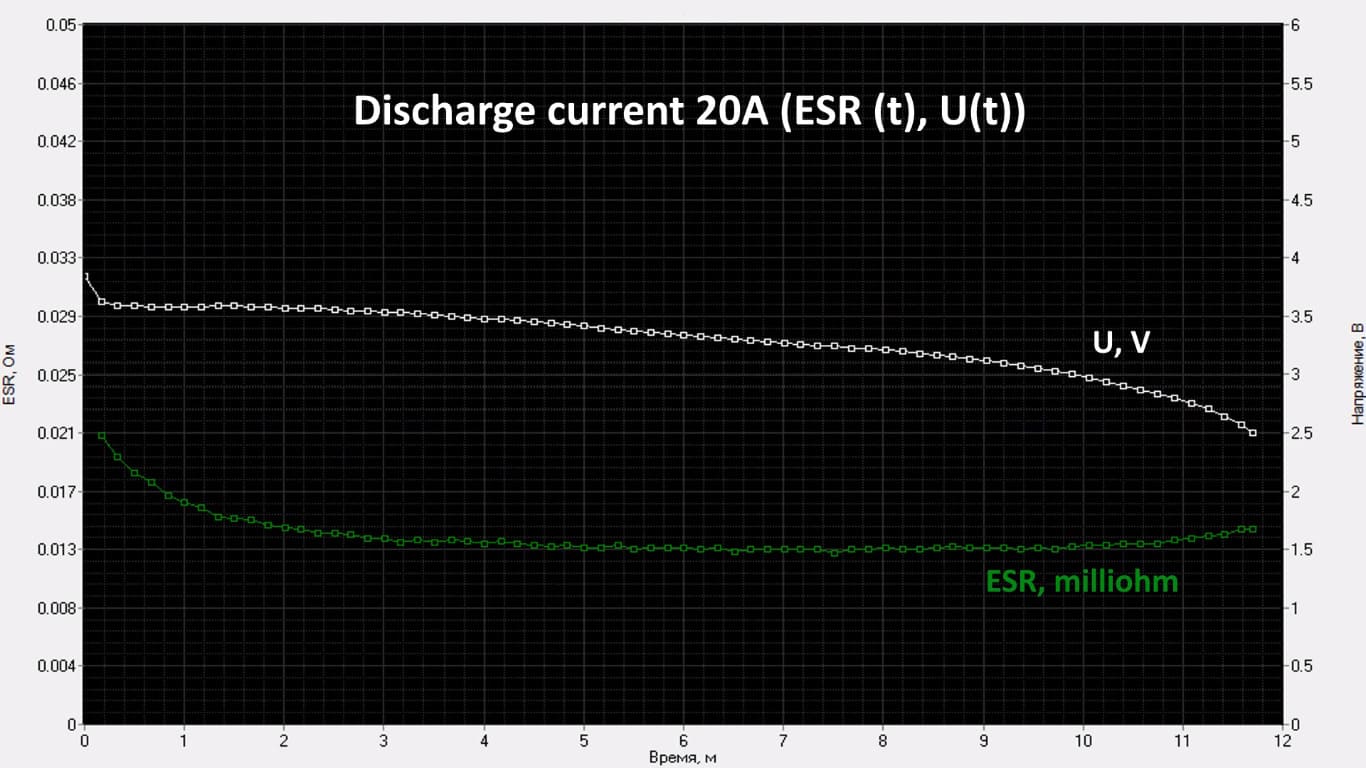
The white curve is an indicator of the voltage at the battery terminals in the discharging of 20A, the green curve is the indicator of the valence series resistance.
We see that at the beginning of the test, the value of SR is 21 milliohms, but during the first two minutes, there is a significant decrease, which I assume is due to the high discharge current and rapid heating of the battery since the XTAR batteries are high current. Although the voltage drops are not very noticeable, if you look closely, you can see that at the start of the test, the voltage drops to 3.6 volts, with a slight increase in voltage in the first two minutes.
Starting from the second minute, there was a significant decrease in SR. However, the decrease in voltage was gradual. This was due to the gradual release of lithium ions from the negatively charged electrode, which passes through the separator to the positively charged electrode and participates in chemical reactions on the surface of the positive electrode. As the lithium ions are spent on the negatively charged electrons, the potential difference between the electrodes decreases, resulting in a decrease in voltage. From 10 to 12 minutes, despite the battery being significantly heated to around 67 degrees Celsius, the internal resistance begins to increase. This could be due to the decrease in the number of lithium ions still present on the surface of the negatively charged electrode. As the current decreases, the voltage also decreases and the internal resistance increases.
This is a high-current battery with a capacity of 4000mAh, an energy capacity of 14.5Wh, a maximum continuous discharge current of 25A (6C), and a maximum pulse discharge current of 40A (10C) at cutoff voltage. The upper temperature limit for the battery surface is 80 degrees Celsius. The XTAR INR 21700H battery can be used in various battery-powered devices, such as power tools, e-cigarettes, and powerful flashlights. This is the manufacturer’s main positioning. If you want to buy this inr 21700h batteries wholesale, just don’t hesitate to contact XTAR, or you can directly buy from xtar official store.
Here is the fully test review video which is in Russian language.